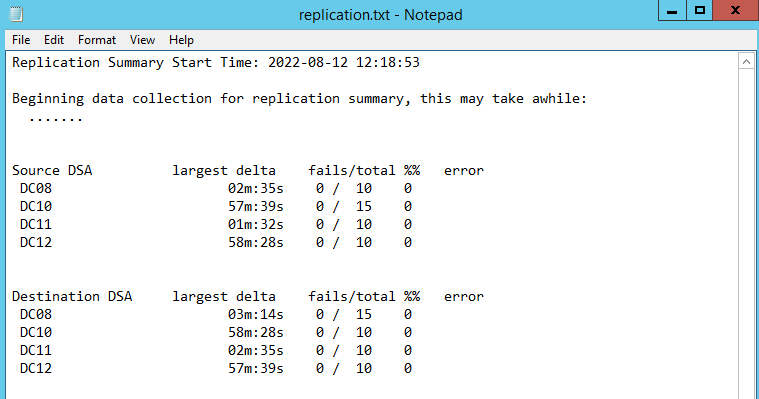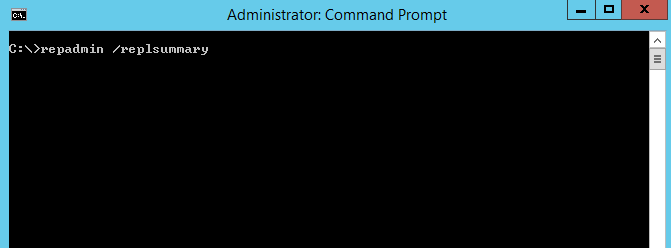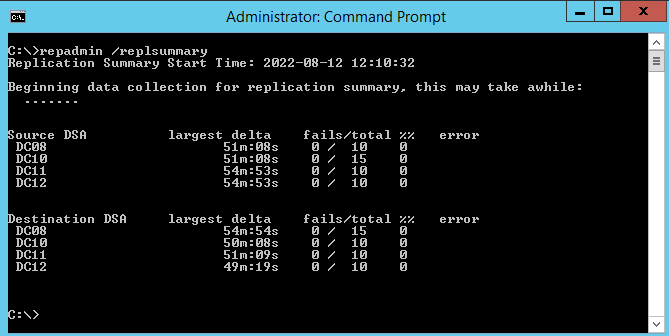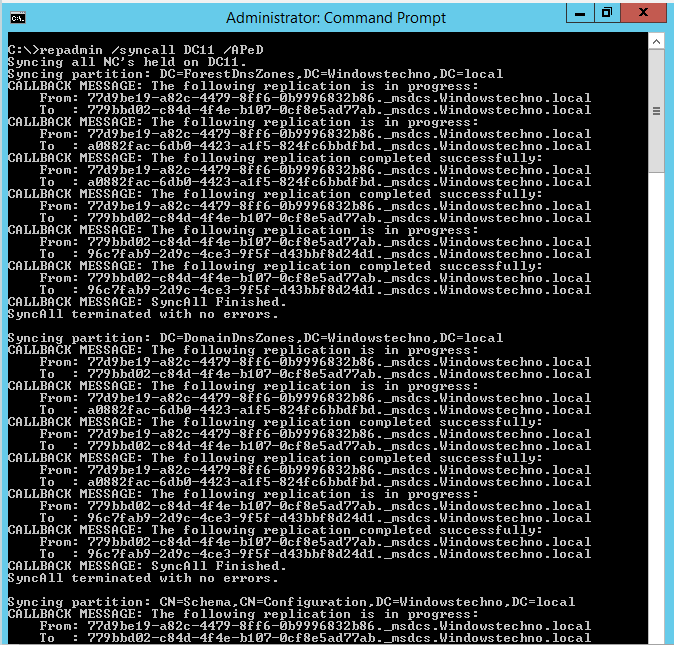How to export replication information in txt file
Hello All,
Hope this post finds you in good health and spirit.
This post is regarding repadmin command line utility and how we can export replication information in txt file
How to export replication information in txt file
Repadmin is a command line tool that’s very helpful to troubleshot and fix active directory replication issues.This command will quickly show you the overall replication status of domain controllers in the forest. Also, manually change it and initiate replication communication between domain controllers.
Open the command line and run the Repadmin /Replsummary > c:\temp\replication.txt

once command executed, it stores the replication information in txt file.

Repadmin /Showrepl /Errorsonly command provide the insight of Active Directory Replication Errors.
The showrepl can output a lot of information. If you want to see only the AD replication’s errors then use this command.
Repadmin /Showrepl /Errorsonly


Repadmin /Replsummary
Repadmin is a command line tool that’s very helpful to troubleshot and fix active directory replication issues.This command will quickly show you the overall replication status of domain controllers in the forest. Also, manually change it and initiate replication communication between domain controllers.
Open the command line and run the Repadmin /Replsummary.
Repadmin /Replsummary

Repadmin /replsummary command show you the overall replication status of domain controllers in the forest.

Repadmin /Syncall /APeD
If you want to push replication you will use the /P switch. For example if you made changes on DC11 and want to replicate those to other DCs use Repadmin /Syncall /APeD command.
Repadmin /Syncall /APeD

Repadmin /syncall
Synchronizes a specific domain controller’s replication partners with all of them.
By default, the command works on the configuration directory partition if no directory partition is specified in the Naming Context> option.
repadmin /syncall <DSA> [<Naming Context>] [<flags>]
See Examples for usage examples of this command.
repadmin /syncall dst-dc01 dc=windowstechno,dc=local /d /e /a
So, that’s all in this blog. I will meet you soon with next stuff .Have a nice day !!!
Recommended contents
How to Check the Active Directory Database Integrity
Disabling and Enabling the Outbound Replication
DFS Replication Service Stopped Replication
What is Strict Replication Consistency
The replication operation failed because of a schema mismatch between the servers involved
Troubleshooting ad replication error 8418 the replication operation failed because of a schema mismatch between the servers
How to export replication information in txt file
Repadmin Replsummary
Enabling the outbound replication
Disabling and enabling replication on schema master domain controller
How to enable strict replication consistency
How to prevent lingering objects replication in active directory
AD replication process overview
How to force active directory replication
Change notification in replication process
How to check replication partner for a specific domain controller
dcdiag test replications
Guys please don’t forget to like and share the post.Also join our WindowsTechno Community and where you can post your queries/doubts and our experts will address them .
You can also share the feedback on below windows techno email id.
If you have any questions feel free to contact us on admin@windowstechno.com also follow us on facebook@windowstechno to get updates about new blog posts.
